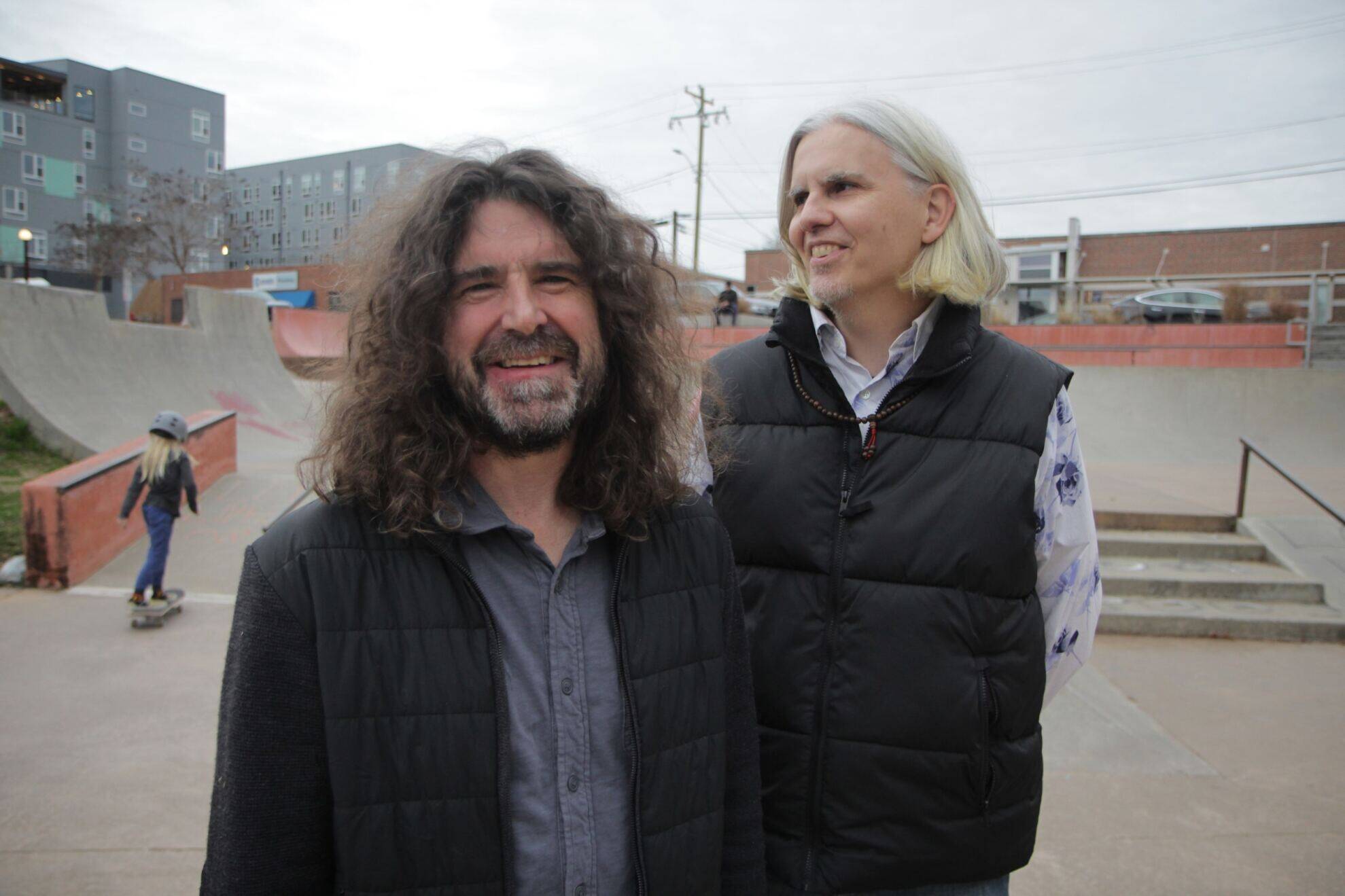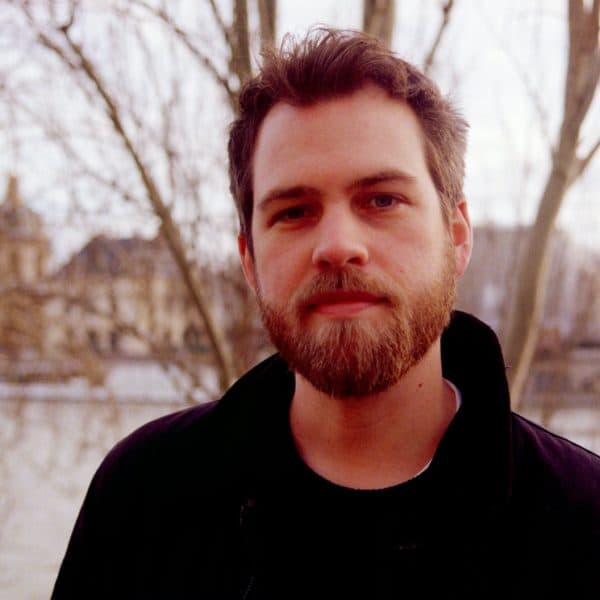Advertisement
The Folk Implosion's score for cult classic film 'Kids' is back and better than before

“There’s no telling what we’ll do when we’re free.” If a single line of lyric could tell a story, that line from The Folk Implosion’s “Natural One” would tell the story of “Kids.” The song’s slinking bassline and boom-bap drums captured the wayward essence of director Larry Clark and writer Harmony Korine’s (“Gummo,” “Spring Breakers”) subversive 1995 film debut, its hip-hop backbone blending seamlessly with lo-fi textures and innovative instrumentation.
“I feel like the ‘90s was so much about grunge and indie rock for people, but for me, it was the beginning of trip-hop, the beginning of Wu-Tang and R&B,” says Lou Barlow, the storied indie rock musician behind Sebadoh, intermittent bassist of alt-rock legends Dinosaur Jr. and one half of The Folk Implosion. Barlow and multi-instrumentalist John Davis formed The Folk Implosion, an experimental indie rock group with elements of punk, lo-fi and hip-hop, in the early 1990s.
“I loved being untethered from my perspective,” he says. “It was really liberating just being able to write about the movie.”
Nearly 30 years after the film’s debut, The Folk Implosions’ iconic film soundtrack is being reissued on CD and vinyl on Sept. 8 by Domino as “Music For KIDS.” The album contains previously unreleased compositions withheld from the public due to mismanagement from previous record labels and offers several remixes, including a fresh take on “Natural One,” the surprise Billboard Hot 100 hit from the original soundtrack. With an extensive 18-track setlist, the reissue presents immense insight into a film that reflected the zeitgeist of mid-‘90s New York City street culture. It shows the extent to which Barlow and Davis dove headfirst into an experimental pursuit, composing music with reckless abandon.
But 30 years earlier, in a bedroom apartment off Harvard Square in 1994, the pair of unwitting 20-somethings were sculpting the bare bones of music to a cult classic movie that didn’t exist yet. Nearly every day, Barlow would catch the red line from Park Street and head to Harvard, where the two would jam from around 9 in the morning until 3 in the afternoon, indulging in their shared love of lo-fi textures and spontaneous music.
A series of peculiar letters would redirect the duo into uncharted territory. “I was getting a fair amount of interesting mail from fans at that point,” Barlow says. One particularly obsessive fan, a yakety kid in New York named Harmony Korine, sent a letter outlining his vision of a gritty street movie he was working on with the subversive photographer-turned-director Larry Clark and asked Barlow to compose a score. “I didn’t really imagine that this guy would be making big films. But my girlfriend at the time was like, ‘We should follow up with this kid; I think this is serious,’” he recalls.
Only a few months later, Barlow found himself in New York City at Clark’s SoHo apartment. Between sushi dinners and street antics (Barlow recalls Korine throwing Bang Snaps at policemen and old ladies), Korine and Clark pitched Barlow their vision of “Kids,” a coming-of-age drama — starring superstar actresses Chloë Sevigny and Rosario Dawson in their first roles — that follows a group of hedonistic teenagers on a wild ride of sex, drug use and New York City skate culture in the height of the AIDS epidemic.
“Harmony had this idea that I was going to do an exclusively lo-fi acoustic soundtrack for the movie,” Barlow recalls. But upon returning to Boston and enlisting Davis for the project, the duo took another approach. “The funny thing is that I didn’t really listen to [Harmony and Larry],” he says. “We were gonna do whatever the f*** we wanted to do.”
Miramax paid for recording sessions at the legendary Fort Apache studio in Cambridge for Barlow and Davis to work. Aside from the assistance of engineers Tim O’Heir and Wally Gagel, they were entirely unsupervised. “Intuition kicked in,” says Barlow. “I was in a really good spot. I was channeling the zeitgeist, writing all the time. All my recreational drugs were working really well for me. Everything was just clicking.”
Barlow and Davis dove into every last piece of equipment the studio had to offer, creating loops of live hip-hop beats with samplers and various vintage synthesizers, building improvised jam sessions from scratch and adding layers of guitars for color. “We were really into hip-hop. We took a more literal approach to the soundtrack: We were going to incorporate our lo-fi aesthetic into sampling,” Barlow says.
Despite ignoring Korine and Clark’s original vision, the gritty, often hallucinatory compositions created by The Folk Implosion flawlessly embodied the spirit of the film. “Kids” depicts the dichotomy of unsupervised teenagers, naive and child-like with unlimited access to corruption; the brash, noisy punk of “Daddy Never Understands” and the disorienting disco of “Nasa Theme” underscore this duality in the film’s most chaotic scenes. Where action tracks like “Simean Groove” and “Insinuation” meld hard hip-hop grooves with wandering guitar licks, an ethereal piece like “Raise The Bells” uses grainy synth movements to engulf scenes in an analog aesthetic.
Though “Kids” was released to controversy and criticism over its graphic themes and artistic merit, Barlow remembers the experience of creating the soundtrack fondly. “The Folk Implosion is some of the only music I’ve made that I can listen to and really enjoy, as opposed to dissecting it or pinpointing things that I’ve failed at,” he says. “We never work with a final idea in mind. We let the music take its twists and turns in the process of putting it together.”
In detailing how Barlow and Davis were swept into the fold of a cult movie sensation about lawless, unsupervised adolescence, a parallel becomes clear. “We were lucky. They gave us carte blanche to do whatever we wanted,” he says of the process. It adds depth to the lyrics behind “Natural One,” a song about the film’s protagonists on an endless spree: “There’s no telling what we’ll do when we’re free.” Perhaps music as paradigmatic as this can only be birthed from such freedom.

